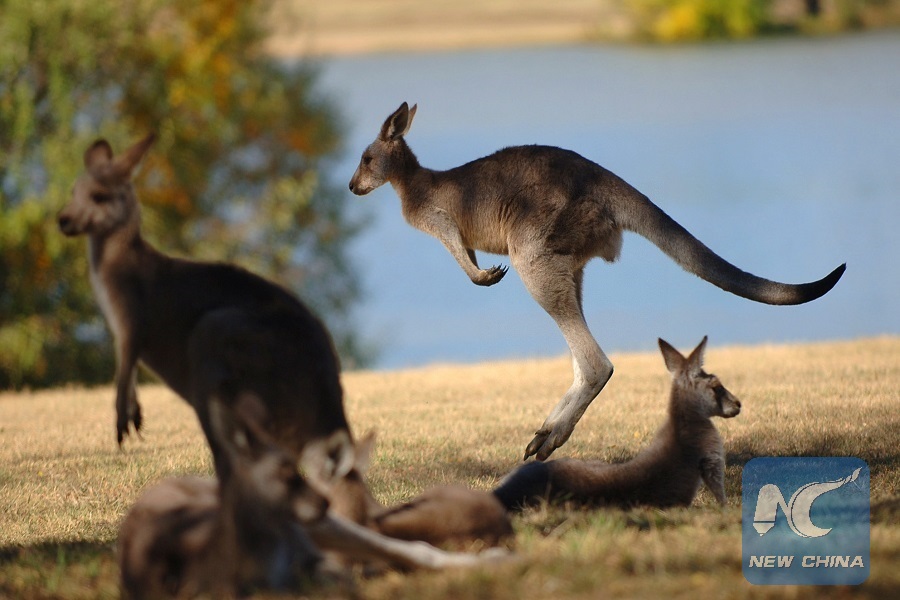Kangaroos rest in a park in Canberra, capital of Australia, in April 2006. (Xinhua file Photo/Mi Ligong)
CANBERRA, June 24 (Xinhua) -- A uniquely Australian problem is set to baffle carmakers intent on bringing driverless car technology "down under", with kangaroos proving to be one of the biggest hurdles for manufacturers calibrating animal detection systems.
Kangaroos, endemic to Australia, are unique in the way that they move, bounding along thanks to hugely powerful hind legs, while staying balanced with an even larger tail.
As a result, the make-up- and movements- of kangaroos are playing havoc with research and development (R&D) teams sent to Australia to further calibrate the animal detection systems in driverless car technology.
Volvo Australia's technical manager David Pickett told the Australian Broadcasting Corporation (ABC) on Saturday that his company has been trying to solve the issue for 18 months.
He said the way a kangaroo moves completely bamboozles the system -- a problem they haven't had with other animals around the world.
"We've noticed with the kangaroo being in mid-flight - when it's in the air - it actually looks like it's further away, then it lands and it looks closer," Pickett said on Saturday.
The team from Volvo have been testing the system at the Tidbinbilla Nature Reserve near the nation's capital, Canberra, for almost two years, but have been unable to perfect the way the system recognizes and acts on a kangaroo's presence.
"First we have to start identifying the 'roo'. We identify what a human looks like by how a human walks, because it's not only the one type of human - you've got short people, tall people, people wearing coats. The same applies to a roo," Pickett told the ABC.
"If you look at a roo sitting at the side of a road, standing at the side of a road, in motion, all these shapes are actually different."
While the hurdle is not expected to delay the eventual roll-out of such technology, it does need to be solved, considering statistics have shown that Australian drivers collide with kangaroos at least 16,000 times per year.
Australia is home to around 35 million kangaroos and they are considered a pest in many parts of the country.


